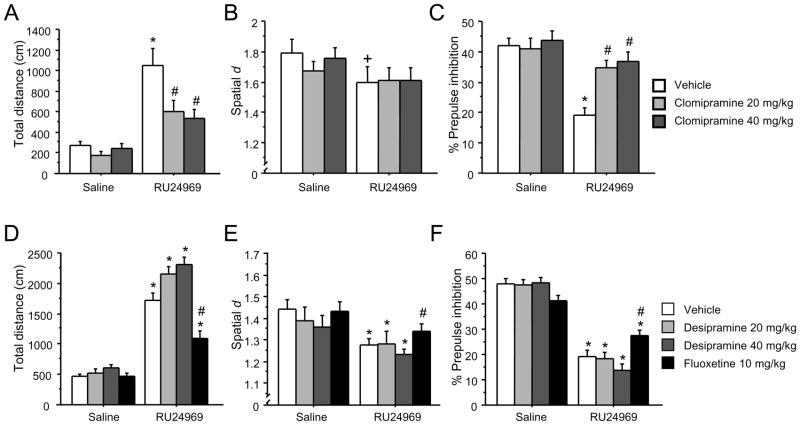Figure 1.
Alleviation of OCD-like behavior with chronic clomipramine and fluoxetine, but not desipramine, treatment. Following 4 weeks of treatment with 0 mg/kg/d (n=14), 20 mg/kg/d (n=14), or 40 mg/kg/d (n=14) clomipramine, mice received injections of the 5-HT1BR agonist RU24969 (0 or 10 mg/kg) on separate test days. Following injections, mice were tested for total distance traveled (A) and perseveration (spatial d) (B) for 20 minutes in the open field, and prepulse inhibition (C). Following 4 weeks of treatment with 0 mg/kg/d (n=13), 20 mg/kg/d (n=15), or 40 mg/kg/d (n=15) desipramine or 10 mg/kg/d fluoxetine (n=15), mice received injections of RU24969 (0 or 10 mg/kg) and were tested for total distance traveled (D), perseveration (spatial d) (E), and prepulse inhibition (F) as above. Results are presented as means ± s.e.m. Asterisk (*) indicates P<0.05 compared to saline. Pound sign (#) indicates P<0.05 compared to chronic vehicle treatment. Plus sign (+) indicates a strong trend (P =0.068).

